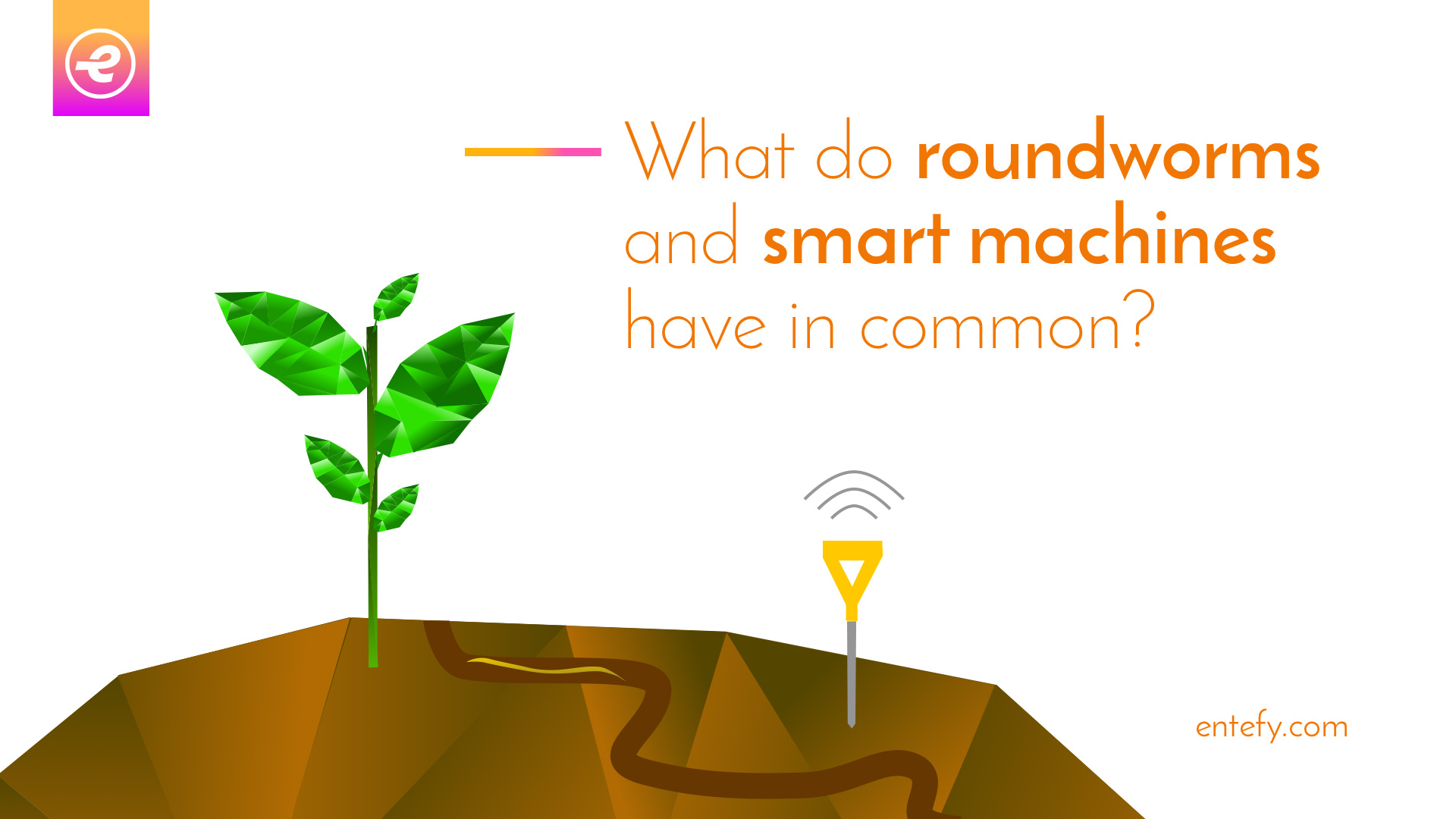Caenorhabditis elegans (also known as the “roundworm”) has 302 neurons, while an average human brain contains 86 billion neurons. Thus, human processing capacity is exponentially greater than that of a roundworm.
Among the roundworm’s notable attributes are that the majority of them are hermaphroditic, they emit a blue florescence at death, and they are one of the most primitive organisms to display sleep-like states. Even 302 neurons get tired.
Market research group, International Data Corporation (IDC), forecasts growth from 2 billion Internet of Things (IoT) devices and smart machines in 2006 to 200 billion in 2020. While some of these devices are massive in capacity, most are humble units with a few FLOPs and minimal memory measured in kilobytes and megabytes. Much like C. elegans.
Roundworms and earthworms might seem insignificant but they are actually critical to the ecological health of the earth. The evolutionary scientist Charles Darwin wrote about this in his last book, Vegetable Mould and Earth-Worms: The Formation of Vegetable Mould Through the Action of Worms With Observations on Their Habits. It was Darwin who first formally demonstrated that worms weren’t a pest (as many had considered them) but were integral to the health and sustenance of agricultural soil.
There’s a parallel here with simple, low-capacity worms having a tremendous ecological impact on their environment because of their large numbers. Similarly, individual IoT devices might not have a lot of capacity (memory and processing) on their own, but in aggregate they are predicted to have a huge impact (e.g. $11 trillion per year in economic value by 2025).
With growth in IoT comes greater complexity: challenges with interoperability, privacy, and security. With this level of complexity, sophisticated technology like Entefy is needed to overcome these challenges.
Watch the video version of this enFact here.
